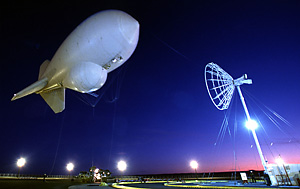The U.S. Army has awarded a $142 million contract to Lockheed Martin to commence its production of more Persistent Threat Detection Systems (PTDS) for supporting the coalition forces.
The Army's firm-fixed-price undefinitized form of contract action empowers Lockheed to commence the systems’ work while final contract terms are under negotiation. The newest systems are over the earlier systems ordered by the Army from Lockheed Martin during the last six months. Bulk of the systems’ work will be carried out in Akron, OH. In addition, additional work will be done in Owego, NY, Cape Canaveral, FL, and Moorestown, NJ.
 Lockheed Martin Persistant Threat Detection Systems
Lockheed Martin Persistant Threat Detection Systems
The PTDS incorporates multi-mission sensors for providing long endurance intelligence, reconnaissance, communications, and surveillance for supporting the U.S. military and its allies.
The PTDS, filled with helium, offers continuous low-cost surveillance and communications capabilities, which are not provided by other types of unmanned and manned aircraft. The PTDS uses a high-strength tether to attach to a mooring system that is relocatable. It carries various types of surveillance equipment for conducting multiple missions.
A concerted effort is being made by the Department of Defense for increasing the available resources rapidly for helping the war fighters to deal with improvised explosive devices (IEDs). PTDS, a tethered type of aerostat-enabled system, can stay aloft for weeks continuously, for border region surveillance round-the-clock. Since 2004, the system is being used by the Army.
Lockheed Martin Mission Systems & Sensors’s Vice President of Integrated Defense Technologies, Stephanie Hill informed that the PTDS provides real-time actionable intelligence and surveillance to the troops for helping them out during real life-threatening situations. He added that the soldiers and civilians are protected by such eyes in the sky and inform the hostiles that they are being watched constantly.
Source: http://www.lockheedmartin.com